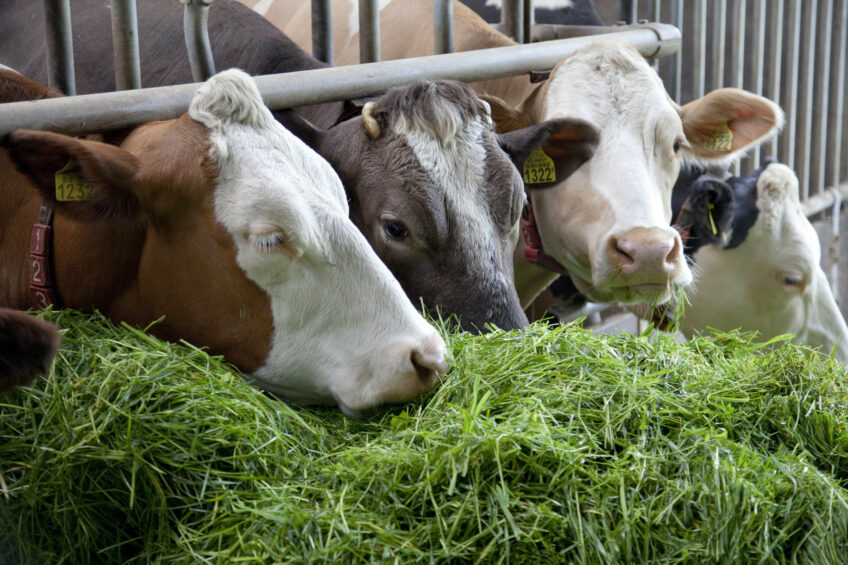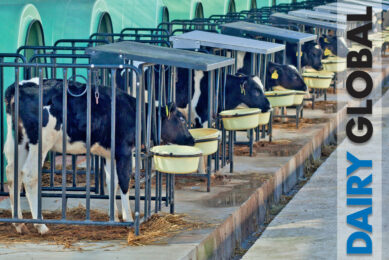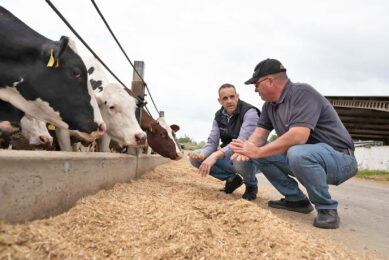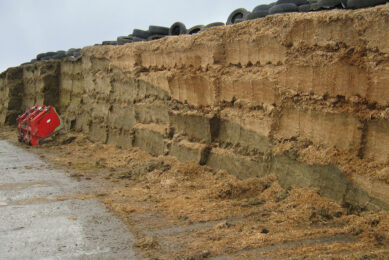4 factors that influence forage quality

High quality base forage is the cornerstone for healthy livestock and good profit in business. But what can you do in practice to improve your forage? Various key factors have an influence on quality, and hence herd production.
Forage makes up a large part of the dairy cow’s diet and it is key to make sure that the harvested forage is of high quality from the field to the cow. This includes forage to use for ensiling or for the harvesting of fresh green forage that is offered to feeding high-yield dairy cattle (zero grazing concept). The type of harvesting machines, ensiling practices, mixing wagons are all important to make sure that dairy cows get the best type of diet possible. The farmer’s management skills are important, but there are also other factors that influence the quality of the forage. Below we explain a few of them.

 Location of the farm
Location of the farm
Approximately 25% of the success of a farm business depends on its location. Each location has its own climatic characteristics. It is up to the farmers to adjust these location specific characteristics and adjust the farm management accordingly. In Allgäu (Bavaria, southern Germany), for example, they manage 5 cuts per year from a piece of pasture, while in Finland only 2 hay harvests are feasible, but with suitably large volumes each cut.
 Farm management
Farm management
How well you manage, plan and make decisions, all influence the quality of your base forage, by up to 75%. Fertilisers for example, must be tuned precisely to each scenario in order to achieve optimum results and a dense crop. High yield harvesting and good silage is only possible with targeted grassland repair sowing and levelling of molehills. A dense and strong grass sward is the basis for clean harvesting. Especially the first cut should be chosen to achieve a low raw fibre content, optimum energy content as well the taste of the forage.
 Harvesting technology
Harvesting technology
The correct use of harvesting machinery is the prerequisite for bringing in protein-rich forage. You can also prevent dirt from entering the animals’ forage. By improving the way harvesting technology is implemented, you can greatly reduce the level of contamination (soil etc.) in the forage.
 People skills
People skills
In addition to applying the right harvesting technology, the skill of the driver also has a significant effect on the quality of the forage. That is because each working step from mowing to ensiling must be performed professionally, which needs a great deal of experience and attention to detail.
Keeping ash content in forage low
The contamination of silage (ash content) can be the result of unnecessary amounts of dirt, soil and sand in the silage, which can be the result of the type of harvesting machines used. It is advised to keep the ash content of silage below 10%. Luckily, mowers and harvesting machines are constantly improving to make sure the level of contamination and ash content of the forage is as low as possible.

A newly developed rake with wheels can lift the rotor when approaching a bump on the ground. This results in less soil in the harvest. Photo: Pöttinger
Machinery for clean forage
Pöttinger, an Austrian agricultural machinery company, addresses the need for clean forage and is constantly building knowledge and developing new machinery dedicated to this topic. Raking has a decisive influence on how much contamination enters the forage. Pöttinger has equipped the rake with wheels that can lift the rotor when approaching a bump on the ground. This ensures the ideal gap between the tines and the ground is maintained so that the tines do not penetrate the soil. The effect of this technology in practice and how this can improve forage quality, and hence production results, has been tested by the German Agricultural Society (DLG Focus Test: Ground tracking and forage contamination in grass silage). This trial studied how much soil (contamination) could be prevented in the forage and how this could benefit the production results of the dairy herd and hence make a better profit.
More energy, better intake
The study revealed some interesting results of the ash reduction. The farm has a yield of 7,500kg DM per hectare and a 12kg of DM per day consumption of grass silage per cow per day. The twin rotor centre-swath rake from the Austrian company realised a reduction of the raw ash content with 1% (reduction of up to 207kg raw ash per hectare per year). This in turn led to a better nutritional profile (higher energy content) of the silage and hence absolute milk production (up 0.38 litres per cow per day, which is 117 litres per cow per year). The cows also liked the forage better, this reflected in the increased forage consumption (up with 200 grams per cow per day). On top of the 117 litres increase, due to higher energy content of the forage, the higher intake also resulted in a higher milk production over entire lactation (up 0.40 litres per cow per year, which is 121 litres per cow per year). Ensuring a high feed intake is important in high producing dairy cows, so this result is very positive. Altogether, a 1% reduction in raw ash content led to a milk increase of 238 litres per cow per lactation. Calculating with a milk price of € 0.34 per litre, this brings the farmer an extra benefit of € 81 per cow and lactation.










